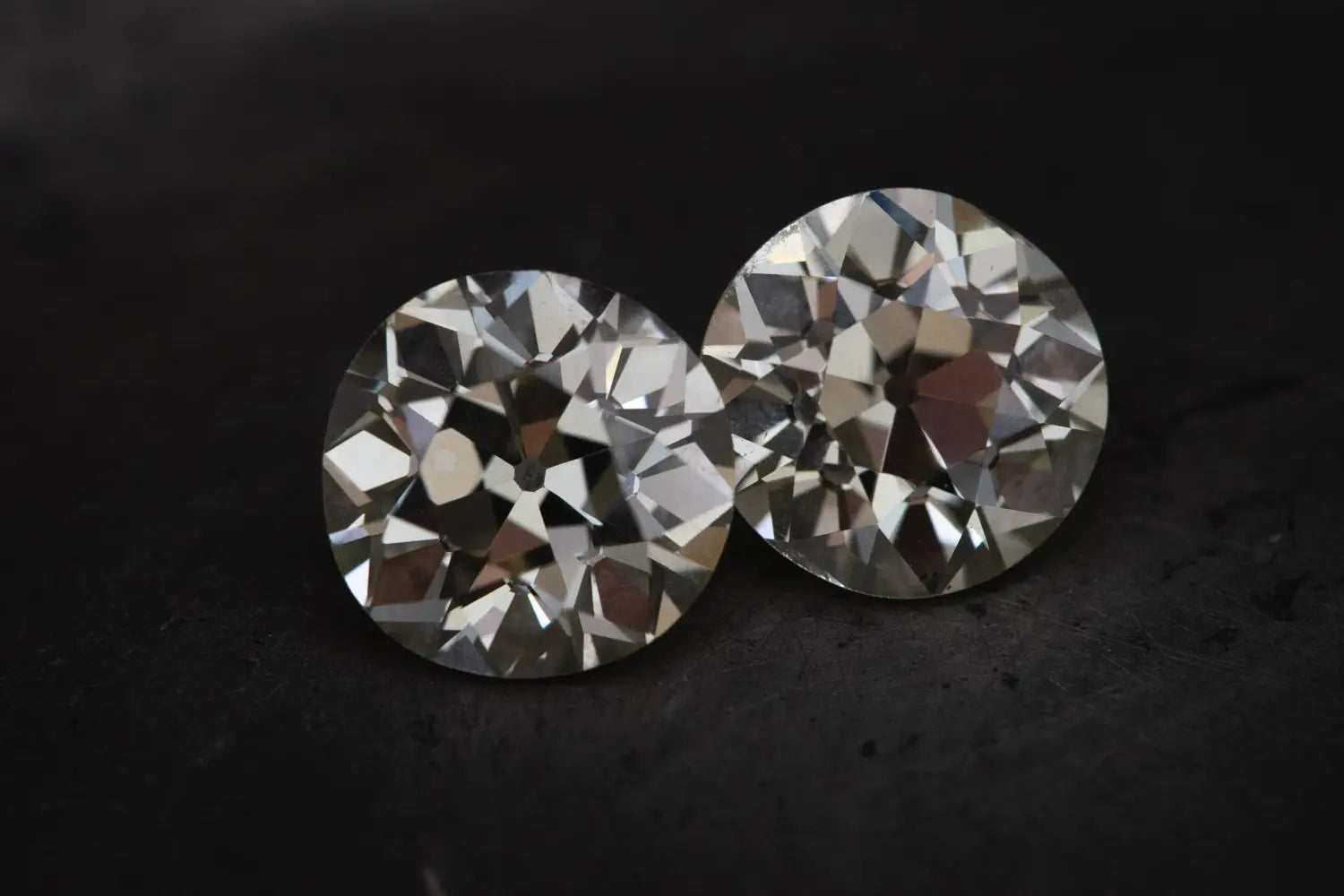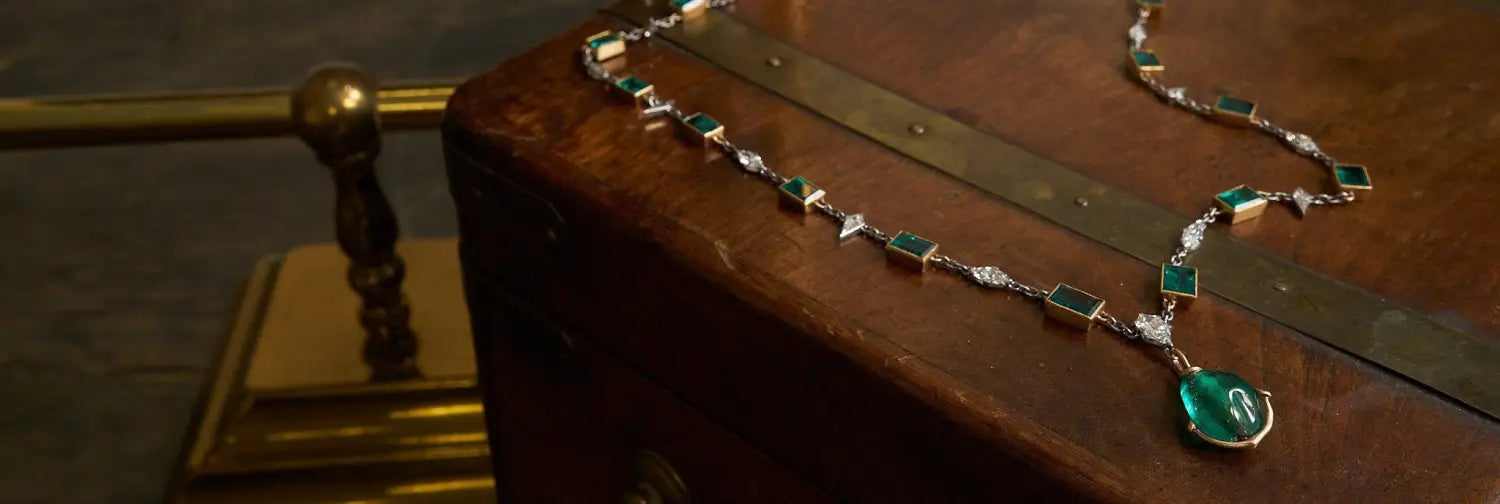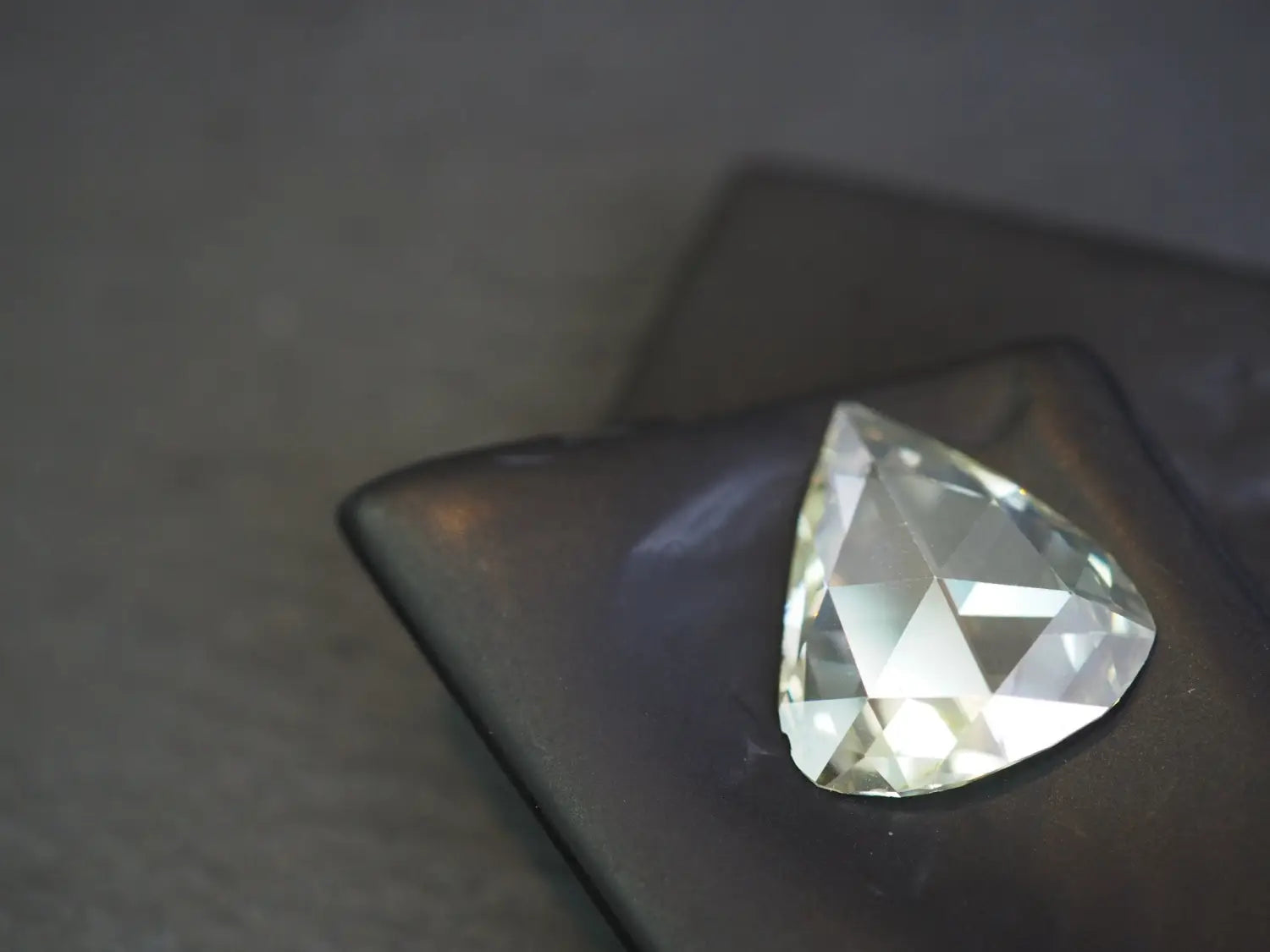
Old European Cuts
Gem School : The Old Euro Cut
This is a blog post I’ve been anticipating for a while! It’s time to talk about my favorite diamond cut: the Old European, also known as the Old Euro, and the predecessor to today’s modern brilliant cut diamond. If you watch our instagram or pinterest you’ll have seen a lot of Old Euros popping up, and that’s because I think this gorgeous vintage style is the cut with the most panache, the most character, and the most romance out there. I’ll explain why below.
History of the “Old European” Cut Diamond
Picture a gala or other grand event held in European capital like Paris or Vienna at the turn of the 20th century. High society guests arriving by horse-drawn carriage and stepping out into marble halls lit by hundreds of candles on huge chandeliers. Incredible bespoke clothing, old world etiquette, and the glitter and flash of crystal fire in the jewelry of the assembled nobility. The Old Euro made this scene its home and its spotlight.
The Old Euro first showed up around 1875, as some pretty rudimentary diamond cutting techniques leapt forward with the invention of mechanical tools like the steam powered lathe, which made it much easier to cut a round stone. In essence, the Old Euro was the Old Mine [link to blog post] cut diamond, made round. Like the Old Mine before it, the Old Euro was cut to perform beautifully under the candlelight that dominated the era.
Characteristics of the Old Euro
The Old Euro is a deep stone, like the Old Mine cut diamond before it. It has a high crown and a small table, and you can really appreciate the structure of the crystal in a stone cut this way — there’s a lot of it to take in! The cut features a relatively large open culet like cuts that preceded it, but foreshadows the eventual arrival of the round brilliant cut with a circular girdle and 58 facets.
Also like the Old Mine cut, the Old Euro sparkles in a subtler manner than the round brilliant that came later. Its glow is softer, and evokes a romanticism that I think is lost with the intensity of more modern stones.
Truly Antique, Increasingly Rare
One of the best and worst things about the Old Euro is that there really aren’t going to be many more of them than exist today. Economics dictate that virtually any diamond mined now will be cut to a modern spec: mostly brilliant cuts, with some princesses and other modern cuts thrown in for good measure. At the same time, over the century and a half since the Old Euro made its mark many of those stones have been recut as brilliants. The end result is that the supply of good Old Euros is diminishing, but those that can be found are often bona fide antiques that bring with them a link to the past that adds story, romance and authenticity to the jewelry.
As the interest in authentic vintage and antique pieces grows, and as a sophisticated buying public looks for jewelry that is a little more unique and special than everything else out there, the Old Euro is a great way to show off your antique jewelry bona fides. These stones will transport you to a different time and place.


